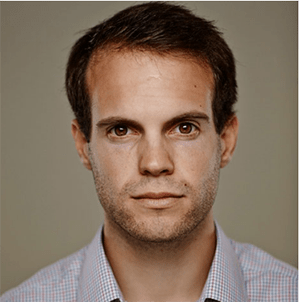
Rainforests are home to half of all plant and animal species, and they are being destroyed at an unprecedented rate. As we co-launch BIOSTREAM, our joint bid for the XPRIZE, George Darrah explains how technology and data science can shed light on the hidden biodiversity of our forests, before it’s too late.
The world’s tropical forests are almost unfathomably rich – and that’s part of the problem. We still don’t fully understand the ecosystems we’re trying to protect, or the vital biodiversity we will lose forever if they are destroyed.
But a new initiative could help achieve the Rainforest XPRIZE’s aim: to mobilise cutting-edge technologies that can improve our understanding of rainforest habitats.
Announcing BIOSTREAM
SYSTEMIQ is joining forces with two world-leading tech innovators: NatureMetrics and Dendra Systems. Together, we’ve created BIOSTREAM, a partnership which aims to monitor and analyse biodiversity data. Developing and deploying autonomous, AI-driven technologies will allow scientists to analyse inaccessible or endangered environments, at low cost and across large areas.
Getting the right information on biodiversity can unlock vital insights into how ecosystems work. In turn, this enables policy makers and investors to better support activities that protect and restore them.
Who’s involved?
All living things leave behind traces of DNA in their environment. NatureMetrics has developed monitoring technologies that can analyse this DNA and build up a picture of a region’s biodiversity.
From artificial intelligence to drone automation, Dendra Systems builds tools for restoring ecosystems using innovative technology and data science. Their advanced imaging of biodiverse ecosystems can detect and analyse animals and plants… right down to individual blades of grass.
SYSTEMIQ adds its systems-thinking analysis and experience of forest regeneration projects in Asia, Latin America and Africa. “Most of us know that rainforests are the most biodiverse ecosystems on the planet, and yet we don’t actually know what is living in vast areas of rainforest, such as the Amazon”, explains George Darrah, who leads SYSTEMIQ’s venture investment activities into technologies that protect and restore ecosystems. “Biostream’s technology platform will be designed to deliver unparalleled biodiversity insights that can help us and indigenous forest communities to track the natural wealth of the rainforest, thereby hastening efforts to safeguard its future.”
Protecting the tropical belt
From revolutionary health diagnostics to climate action, the XPrizes have focused media attention and considerable research resources on humanity’s biggest issues. But away from the ‘moonshots’, SYSTEMIQ has been building other innovative, nature-based solutions.
With Partnership for Forests, we partner with more than 150 companies to protect over 2 million hectares around the tropical belt and have mobilised around £250 million into sustainable land use and forestry. SYSTEMIQ collaborates with the Blended Finance Taskforce and others on innovative solutions for ecosystem protection and payment for nature services. We’re also working with China, Indonesia, the UK and many other governments to strengthen policies for nature conservation and to support strong outcomes in this year’s global biodiversity and climate conferences.
It’s this search for new solutions that brought George to the project. He trained as a biologist and became fascinated by the richness of the Bornean rainforest as a student. He went on to lead commercial development for an ecosystem restoration company in Sumatra, and to work with communities who rely on their landscapes as a “treasure chest of biodiversity”; supporting these groups is key to success. “Forests are disappearing under an onslaught of timber extraction and conversion to agriculture. But indigenous forest communities and their supporters remain as committed as ever to protecting them. By developing and deploying technology in partnership with these communities, we can help them stem the tide of deforestation.”

